Sanctum Collection – Review
by Ric
|
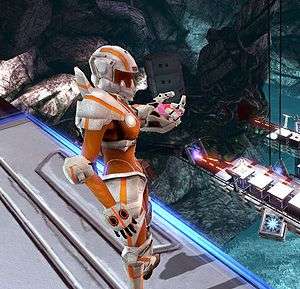 The tower defence genre fascinates me. In the modern gaming world where developers are constantly trying to freshen up old genres by combining them with others, like the FPS-RPG styling of Borderlands, it seems to be that tower defence games are more willing to explore every possibility. And that’s probably why we now have Sanctum, the self-proclaimed first tower defence FPS from first time developer Coffee Stain Studios. In Sanctum you play as Skye, an elite warrior tasked with protecting her home city of Elysian One by building a bunch of turrets to protect a series of “cores”, which are evidently being used to power the city, from some evil aliens. You’re never really given much more of a story than that, in fact I actually had to do some research online to piece together half of that story, but it’s not really important. That said, there is a certain amount of additional background story hidden in the game, but more on that later.
The tower defence genre fascinates me. In the modern gaming world where developers are constantly trying to freshen up old genres by combining them with others, like the FPS-RPG styling of Borderlands, it seems to be that tower defence games are more willing to explore every possibility. And that’s probably why we now have Sanctum, the self-proclaimed first tower defence FPS from first time developer Coffee Stain Studios. In Sanctum you play as Skye, an elite warrior tasked with protecting her home city of Elysian One by building a bunch of turrets to protect a series of “cores”, which are evidently being used to power the city, from some evil aliens. You’re never really given much more of a story than that, in fact I actually had to do some research online to piece together half of that story, but it’s not really important. That said, there is a certain amount of additional background story hidden in the game, but more on that later.
When you load up the single player for the first time, you’re encouraged to play the tutorial where you’ll learn the basics of placing blocks and then attaching a weapon to them (you must place blocks down before placing a turret), as well as how to fire your own weapon. And with that, you’re thrown into the first level. To say that the tutorial doesn’t prepare you adequately for the real game would be an understatement. Yes, it teaches you the bare minimum required to survive, but it provides no mention of the different turret types, the weapons you can use or the tactics you should employ. You’re taught how to kill and then you’re left to work out the rest for yourself – hence why I lost pretty quickly in my first try.
In any other tower defence title, the usual tactic is to build as many of the best turrets you can and then sit back and watch as the enemies die. As such, that’s exactly what I did; I built a few Gatling Turrets and waited for the enemies to die. Sanctum, however, isn’t like other tower defence games, and I rapidly found myself inundated with enemies, forcing me to retreat back to my core in a vain attempt to stop them before they blew it up. I failed.
First of all, you have to manipulate the paths of your enemies using your blocks. The game is split into two phases: the build phase and the extermination phase. In the build phase, you can see the grid on which you can place your towers, and you also see the route that the enemy will take. Using your blocks, you can adjust this path so that they take longer to get around the map, or have to manoeuvre through an unending maze of death that you have constructed. The maps are usually large and open, allowing you to construct some impressively complex mazes for the aliens to wander through. The enemies can’t attack blocks, so you’re in no danger of your route being changed by them at any point. That said, if you yourself think you can make a better maze, blocks can be sold and rebuilt in different locations.
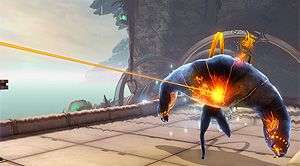 Now, if you’re like me, you’ve just read that paragraph and thought, “well, if they can’t take down blocks, why not just block the entrance?” And it’s here that the entire premise of Sanctum collapses dramatically. You have to leave a route that the enemies can walk through; the game will automatically stop you from building blocks in a location that would completely block any foes. It means that there’s actually a game there, certainly, but it’s a ridiculous piece of logic that only a game would use and it really kills the immersion.
Now, if you’re like me, you’ve just read that paragraph and thought, “well, if they can’t take down blocks, why not just block the entrance?” And it’s here that the entire premise of Sanctum collapses dramatically. You have to leave a route that the enemies can walk through; the game will automatically stop you from building blocks in a location that would completely block any foes. It means that there’s actually a game there, certainly, but it’s a ridiculous piece of logic that only a game would use and it really kills the immersion.
Let’s ignore that issue, however, and focus on the turrets themselves. There’s a nice range of turrets on show, from the aforementioned Gatling Turret, which is cheap, does small damage but has a high fire rate, to the Scatter Laser, which can attack both ground and air targets but is a lot more expensive, and the interestingly named “Violator”, which acts as a sniper rifle and does a ton of damage. There are also panels that you can place on the floor which have varying effects on enemies, such as slowing them down or increasing how much damage they take but, to be honest, if you have enough weapons, you can take down pretty much anything.
Of course, these things are all handled in the build phase; the real meat of the action lies in the extermination phase. Here, you whip out your own weapons and can join in the fray, helping your turrets obliterate the alien hoards into tiny chunks. There are only five weapons available to use, and actually you’re only likely to use two of them, namely the assault – the generic machine-gun – and the sniper rifle, which is self-explanatory. The other three: the Freeze Gun, rocket launcher and shotgun, while providing some variety, really don’t offer any advantages over the previous two, and so you’ll probably only use them for curiosity’s sake.
In a move that will mess with your head if you’re used to other turret defences, however, you yourself are actually the most effective turret you have. There are twelve enemy types you come up against, including the basic grunt type of Walkers, its gigantic brother (the aptly named Big Walker), and little buggers that storm through your maze known as runners, along with big buggers that storm through called Chargers. While these types can quite easily be taken care of by your army of turrets, there are some that require personal intervention. The Bobblehead, for example, is an enemy that is invincible unless shot in the two glowing balls it has for a head. Your turrets will rarely hit this target, and if they do they’ll never do enough damage in time, so it’s up to you to get out your sniper rifle and take care of the them the old fashioned way. Which leads me nicely onto upgrading. One of the other reasons I failed so quickly on my first attempt was that I spent more time building new turrets than I did upgrading my old ones. Upgrading grants extra damage and sometimes a wider area of attack, and is the key to winning the game. To put it into numbers, one fully levelled up Gatling Turret would need about twenty first level turrets to deal the same amount of damage. Since enemies level up with each wave as well, it’s vital that you keep your turrets at as high a level as possible to make sure you can better fend off the impending waves.
 Your own weapons can – and must – be levelled up as well, and it’s here that you’ll need to do some serious thinking. Would it be better to spend your resources on upgrading your turrets, or should you upgrade your own guns? With a limited number of resources, which is added to in steadily larger amounts at the start of each build phase, you’ll need to work out what to do well in advance of the next few waves. Mercifully, Sanctum actually allows you to see ahead by five waves to plan out your spending accordingly, but it can still be incredibly overwhelming when you first start out. Which is probably the biggest problem that Sanctum has overall: it can be very, very tough.
Your own weapons can – and must – be levelled up as well, and it’s here that you’ll need to do some serious thinking. Would it be better to spend your resources on upgrading your turrets, or should you upgrade your own guns? With a limited number of resources, which is added to in steadily larger amounts at the start of each build phase, you’ll need to work out what to do well in advance of the next few waves. Mercifully, Sanctum actually allows you to see ahead by five waves to plan out your spending accordingly, but it can still be incredibly overwhelming when you first start out. Which is probably the biggest problem that Sanctum has overall: it can be very, very tough.
Starting out, it’s likely you’ll spend half your time tearing your hair out in frustration as you watch the aliens waltz through your maze of destruction and straight into your core, while you fire pointless round after pointless round into them, barely scratching them because you forgot to upgrade your weapons. You can’t be killed by the attackers, only pushed away, and when they walk into the core they die instantly, but not before taking away a fair chunk of your core’s health that makes a small part of you die inside because you’re such a failure. It’s uncompromising and difficult and after my first two attempts I was willing to give it all up because I couldn’t hack it.
Persevere, however, and you start to figure it all out. With enough time and effort, you can have a fully functioning valley of death that you can stand over and gloat as the bodies pile up below and your core remains untouched. Once you get into the swing of things, Sanctum is actually a very enjoyable and tense game that will challenge both your brain and your trigger finger. If you should feel like exploring the maps a bit more, there are a few little Easter eggs in each one that provide a little more back-story and are nice little treats for you to find.
What a shame then that there simply is not enough of it. There are six main maps, each taking around half to three-quarters of an hour to complete, so you can be watching the credits in about three or four hours. There are an additional four maps that were released as DLC and are included on the disc (five if you count the Christmas special), but it just doesn’t feel like quite enough content to justify the purchase.
Visually Sanctum looks quite cartoonish, with bright colours and smooth, simple graphics. The textures don’t have a huge amount of detail, but given that you’re mostly going to be dealing with blocks, it’s unlikely you’ll spend a lot of your time marvelling at graphics anyway. Rather annoyingly, there can be quite a large amount of slowdown during the extermination phase, particularly as enemies die. While there can be up to around 75 enemies on screen at any one time, as the bodies pile up, the frame rate drops and drops until it’s almost unplayable. There is the argument that it could be the fault of my computer, but even after turning all my settings down to the lowest available I still had trouble.
 |
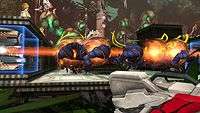 |
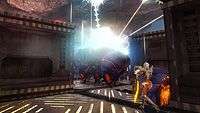 |
I had no trouble, on the other hand, with the soundtrack. There’s a nice mix of serene, trance-like music for the build phase, and then when you head into the extermination phase, you find yourself in a world of epic techno, and even a little bit of dubstep to help proceedings. The retail edition even comes with a copy of the soundtrack, which is a cool little bonus, especially since it’s probably one of the best things about the game.
One of the other major selling points of Sanctum is its multiplayer. Up to four people can join forces to take on the aliens, but while this seems like a great idea to begin with, it’s filled with tiny annoyances. For starters, you have to wait for everyone to be ready before you can get onto the extermination phase, meaning that if one of your team-mates feels like taking as much time as he likes to decide if his turret is in just the right place, he can, and you’re left twiddling your thumbs until he’s done. Not only this but if you join a game halfway through you’ll probably find yourself lacking any space to put your own turrets. You can help out your teammates by upgrading their turrets for them if they lack the resources, but it’s just not quite the same as constructing your own death machine.
All in all, Sanctum isn’t a bad game, but it isn’t exactly superb. If you can persuade some friends to get it with you, you could probably have a good laugh for a few hours on the multiplayer, and the single player will keep you entertained for a short time, but there’s just not enough content to keep you going for long, and not enough replay value to make you want to go back and re-do any of the levels by yourself.
Pros- Open-ended nature of the maps leads to fun maze construction
- Wonderful soundtrack
- You feel like a badass watching aliens getting slaughtered
- When you get into it, it’s actually a lot of fun…
- …But the initial harshness can be very off-putting
- Tutorial doesn’t give you enough information
- Too much slowdown, even on the lowest graphics settings
- Not enough content
Sanctum can be a confusing little game to get your head around initially, given its focus on using yourself as a weapon rather than building a ton of turrets. But keep at it, and you’ll find a fun, rewarding experience that, while short, will keep you entertained for those few hours it’ll take you to beat it. The graphics aren’t amazing, and the multiplayer can be tedious with the wrong people, but when you get down to some serious killing with a great soundtrack in your ears, it’s a solid, entertaining experience. Coffee Stain Studios should be proud of what they’ve done, but next time maybe they should be aware of being a little more accessible for new players.
Last five articles by Ric
- Playing Rhiannon, With Rhiannon
- The Hidden Controversies of 2015
- Best of 2015: Tell No Tales
- Best of 2015: A Good Walk Spoiled By John
- Best of 2015: My Summer As A Drug Dealer















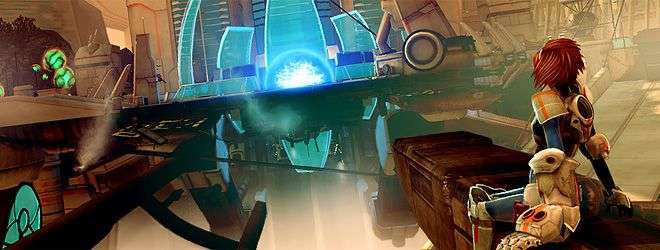
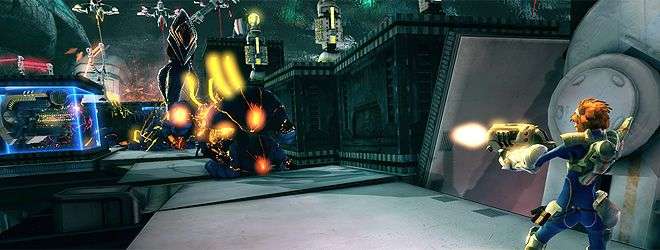
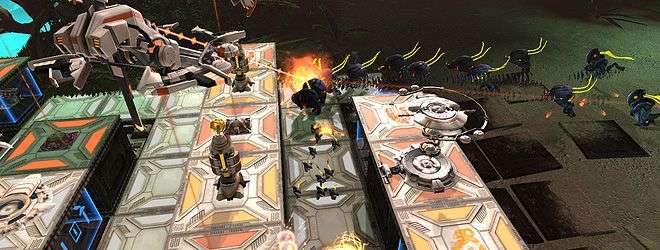
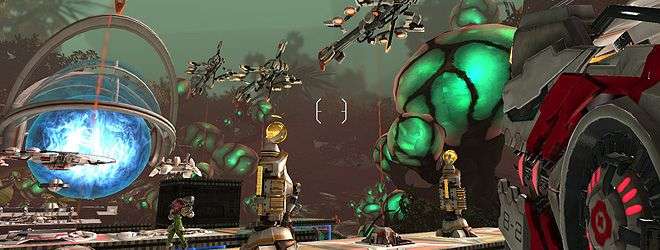






At the very least, it sounds like a really interesting take on the Tower Defense genre, and that alone peaks my interest. Despite the flaws, you’ve sold it really well to me
Great review as always, Sir Ric!